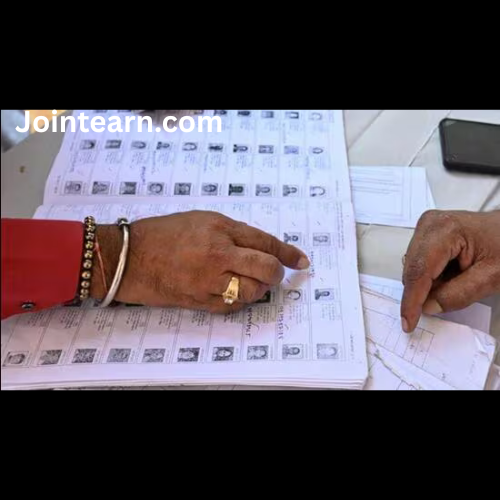Bihar’s 2025 assembly elections underscored a political reality that has defined the state for decades: caste remains one of the most influential factors shaping voter behavior. While governance, welfare schemes, and campaigning style played a role, the decisive factor in many constituencies was the arithmetic and alignment of caste groups, highlighting the persistent material and social significance of caste in everyday life.
Caste in India has long shaped life outcomes. Even decades after independence, birth into a particular caste can influence access to education, employment opportunities, social mobility, and community status. Bihar, in particular, has seen caste shape political trajectories, with voting patterns and electoral outcomes often reflecting deep-seated social divisions. Over the past twenty years, nearly half of the constituencies in Bihar have elected representatives from the same caste, even if party affiliations shifted — demonstrating that caste identity often trumps party loyalty.
Caste Through Bihar’s Political Eras
The state’s electoral history is closely intertwined with caste dynamics. During the Congress era, upper-castes dominated almost half the assembly seats. In the Lalu Prasad Yadav era (1990–2005), the influence of upper-castes declined sharply, while backward classes, particularly Yadavs, became the dominant electoral bloc. The Nitish Kumar period has seen a slight decline in backward-class dominance and the rise of the extremely backward classes (EBCs), though still not proportionate to their population share.
This historical context meant that caste was not just a backdrop but a central factor in candidate selection, campaign strategy, and alliance-building.
NDA’s Strategy: Building a Broad Caste Coalition
The National Democratic Alliance (NDA) entered the elections with a significant numerical advantage due to the broad spread of castes it could appeal to. The JD(U) concentrated on the EBCs — numbering around 110 castes — many of whom benefited from Kumar’s 2006 decision to sub-categorize reservation benefits. The BJP, in contrast, focused on the numerically smaller but prosperous upper-caste groups. Both parties attempted to balance support among other backward classes, while the JD(U) also allocated some tickets to Muslim candidates. Smaller allies such as the Lok Janshakti Party (RLP) and Hindustani Awam Morcha (Secular) supplemented this strategy by targeting Dalit voters while ensuring representation from general castes.
The NDA’s approach relied on disciplined campaigning, focusing on strong local candidates, leveraging caste dynamics, and avoiding internal squabbles that had undermined previous elections.
Grand Alliance Missteps: Overestimating Charisma
The Opposition Grand Alliance, comprising the RJD, Congress, and smaller parties, pursued a contrasting strategy centered on personality and symbolic gestures. While both the RJD and Congress attempted to appeal to EBC voters, the RJD allocated only 13 of 143 seats to these communities, and Congress gave just 4 out of 61. Instead, the alliance banked on projecting VIP chief Mukesh Sahni — a former Bollywood set designer with no electoral experience — as a surprise candidate for deputy chief minister.
This strategy underestimated the nuanced and long-term work required to build support among EBCs. Many of these communities do not vote as a monolithic bloc, and relying on symbolic representation rather than substantive policy and outreach proved ineffective. The VIP’s Mallah vote bank, for example, constitutes only 2% of the electorate, too small to swing the results.
Election Results: Caste Polarization Evident
The outcomes reflected a clear polarization along caste lines. Almost all communities, except Yadavs and a segment of Muslims, abandoned the Grand Alliance, leaving it with just four of the 38 SC-reserved seats — down from 17 in 2020. For the first time in nearly 40 years, Yadavs were unlikely to be the single-largest sub-caste in the assembly, underscoring the limitations of a strategy heavily reliant on a single dominant community.
This result highlighted several key lessons:
- Limited Appeal of Tejashwi Yadav Beyond Yadavs: Unlike Akhilesh Yadav in Uttar Pradesh, who expanded his party base beyond the dominant Yadavs to smaller backward and Dalit groups, Tejashwi Yadav failed to significantly broaden the RJD’s appeal. His strategy, heavily influenced by the shadow of his father Lalu Prasad, attempted only a small-scale experiment in EBC outreach, which did not yield results.
- Durable Goodwill for Nitish Kumar: Kumar’s longstanding relationships with smaller backward communities, cultivated since the 2000s, remained intact. The coalition of extremes — the BJP’s upper-caste base and JD(U)’s EBC support — was held together by Kumar’s personal stature, experience, and credibility.
- Material Concerns Drive Caste Voting: In Bihar, caste is closely linked to tangible, material interests — access to welfare, employment, education, and mobility. Campaigns that focus on symbolic representation without addressing these real-world concerns are unlikely to succeed. In 2025, the Grand Alliance largely failed to connect caste outreach with material benefits, whereas the NDA’s programs and policy initiatives directly addressed such concerns.
Conclusion
The 2025 Bihar elections reaffirmed that caste remains a decisive factor in the state’s political calculus. While governance, campaigning style, and leadership personality are important, the arithmetic of caste alliances, combined with substantive policy outreach, often determines the final outcome. Nitish Kumar and the NDA successfully leveraged decades of groundwork, built durable alliances across caste groups, and addressed material concerns to secure victory.
For opposition parties, the election offered a stark reminder: building a broad and lasting electoral coalition requires more than charisma or short-term symbolic gestures. In Bihar, the ability to address the everyday concerns of marginalized communities while balancing caste representation remains the bedrock of political success. The results of 2025 demonstrated that in this state, caste calculus, when combined with material governance, continues to swing votes decisively.


Leave a Reply